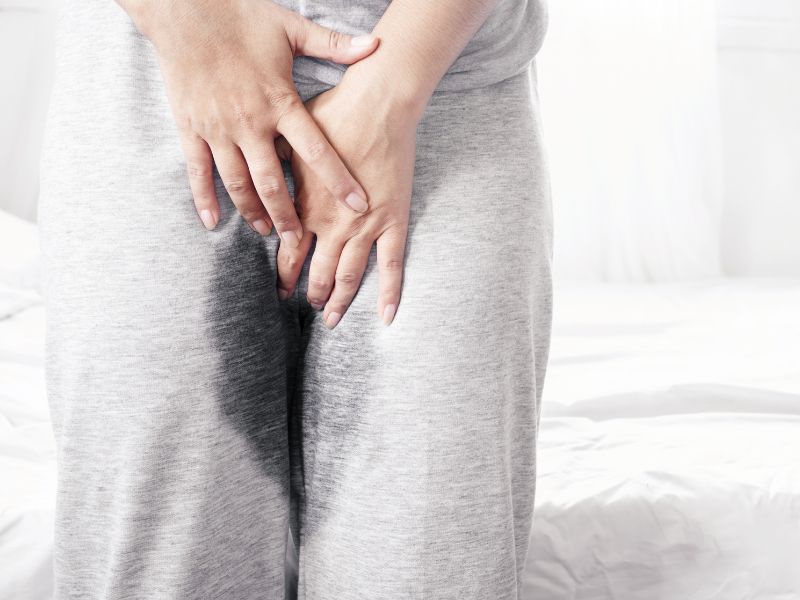
Do you often find yourself rushing to the toilet, only to not make it there in time? Does your bladder drive you mad with its frequent signals that your body can’t ignore? If so, then this article will help you understand why and provide some solutions to manage or treat your urinary incontinence.
Urinary incontinence (UI) is an involuntary and uncontrolled leakage of urine. It can range from small drops to larger amounts of urine that one might not be able to hold in or control. UI affects people of all ages, but it is especially common amongst women, older adults, and those with chronic medical conditions.
Types/Symptoms of Urinary Incontinence
There are a few different types of urinary incontinence that can affect people:
- Stress incontinence is when urine leakage occurs while performing activities such as coughing, sneezing, laughing, or exercising. This type of UI is the most common among women.
- Urge incontinence is when someone experiences an intense, sudden urge to urinate that cannot be stopped and leads to urine leakage. This type of UI can happen during sleep (nocturia) or during the day.
- Mixed incontinence is a combination of stress and urge incontinence.
- Transient incontinence is temporary incontinence caused by certain medications, alcohol, or medical conditions.
- Overflow incontinence is when there is a continuous leakage of small amounts of urine due to the bladder not emptying completely.
- Functional incontinence is when physical or mental limitations prevent a person from being able to reach the toilet in time. This type of UI is more common among older adults, those with chronic medical conditions, and those who are disabled.
What are some common causes?
The most common cause of urinary incontinence is damaged nerves, weakened muscles and tissues in the pelvic floor. This can be due to factors such as childbirth, ageing, obesity, injury, or chronic medical conditions. Other common causes of UI include certain medications, urinary tract infections (UTIs), and neurological disorders. The urethra also plays an important role in preventing leakage since it is the tube through which urine passes from the bladder out of the body.
How is it diagnosed?
Your doctor will ask questions about your symptoms and do a physical exam to diagnose UI. They may also order tests such as an ultrasound bladder scans and other functional tests to determine the cause of your symptoms and recommend treatment options.
What treatments are available?
The type of treatment for urinary incontinence will depend on the underlying condition causing it, as well as how severe the symptoms are. Common treatments include:
- Pelvic Floor Exercises: Strengthening the muscles of the pelvic floor can help with urinary incontinence. Pelvic floor exercises involve squeezing and releasing certain muscles in order to improve bladder control. A physical therapist (physiotherapist) or a urogyanecologist can provide guidance on how to properly perform these exercises.
- Medication: Medications are available to help improve bladder control and reduce urinary incontinence symptoms.
- Invasive treatment/Surgery: In some cases, invasive means may be necessary to treat urinary incontinence. This could involve using a device to stimulate the nerves around the bladder or implanting a urethral sling. Your doctor will be able to advise you which management modality is most appropriate for your condition.
- Bladder training: Bladder training is a way of retraining the bladder to hold more urine by gradually increasing the time between trips to the bathroom. This can help reduce urinary incontinence episodes and improve bladder control. Working with a physiotherapist may be beneficial in learning proper techniques for bladder training.
These are just some of the available treatments for urinary incontinence, and other options may be available. It is important to ensure that any treatment plan is tailored to an individual’s specific needs and lifestyle. There are also a variety of products available that can help with bladder control, such as absorbent urinary pads or panty liners. These products help to absorb any unexpected leaks and keep the skin dry. Working closely with a urogynaecologist or physiotherapist can help ensure the best possible outcome.
Conclusion
If you are dealing with urinary incontinence and would like to find relief, then it is important to talk to your doctor and get a proper diagnosis. They can help you find the right treatment options for your individual condition. With the right help, you can manage or even cure your pee problems!
Disclaimer: The information provided in this article is for general purposes only and should not be considered as a substitute for medical advice. Always consult with your healthcare provider before making any changes to your current treatment plan or starting any new medications.

